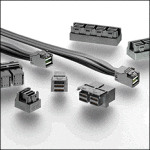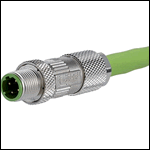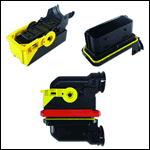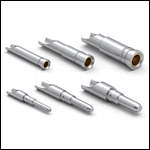Fiber Termination for Passive Optical LANs
As enterprises begin to adopt passive optical LAN (POL) technology, they face a number of design and implementation challenges and choices.
When it comes to premises networks made of fiber, system integrators, installers, and customers are faced with choosing between pre-terminated plug-and-play fiber assemblies or terminating the fibers to length on site during installation. Let’s review the latest innovations in mechanical fiber connectivity.
Innovative single-piece, field-installable fiber connectors use clever and inexpensive non-powered plastic tools to enable low-cost, quick, and easy fiber connector terminations on site.
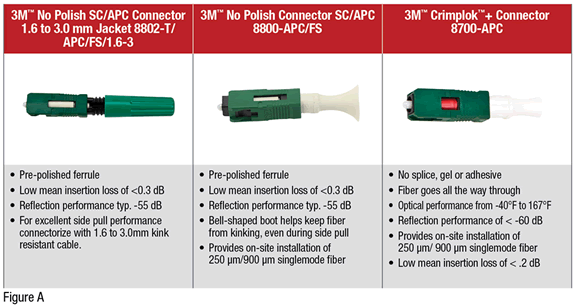
Gone are the days of lengthy procedures to secure the buffer/jacket and polish the end-face ferrule with size after size of lapping film in figure-eight motions to achieve just the right polish. Today, fiber terminations for in-building networks can be as easy as or easier than RJ-45 common copper cabling terminations. Previously, to obtain desired quality installations of fiber solutions, factory-terminated cable assemblies may have been the best way to go. But factory-made cable assemblies that are pre-tested and delivered with factory-quality systems and release specifications can attain consistent high-quality performance. No doubt, some customers may still prefer this solution.
Alternatively, if one did choose to terminate the fiber on site in the past, the only way to achieve the connector performance specifications desired in the field may have been to invest in expensive fusion-splicing technology (with equipment prices ranging from $4,000 to $15,000 or more depending on the sophistication) as well as a significant training commitment for personnel to operate the equipment.
However, today’s mechanical fiber connectors for on-site termination offer performance specifications to the same standards criteria as pre-terminated or fusion splice-on connectors.
Mechanical fiber connectors can provide the system integrator/installer a much lower investment in inventory, project management, and tooling and training for an overall total cost of ownership (TCO) benefit. Due to easy on-site fiber connectivity methods, the installer now has the same customizable installation capabilities as a copper LAN and easy, quality termination methods for in-building fiber networks. (Pre-terminated fiber patch cords may still be used to connect the active equipment.)
Comparing alternative fiber network installation methods, new mechanical fiber connectivity solutions for easy on-site installation can yield quantifiable benefits over fuse-on connectors or pre-terminated factory assemblies, as shown in Figure B.
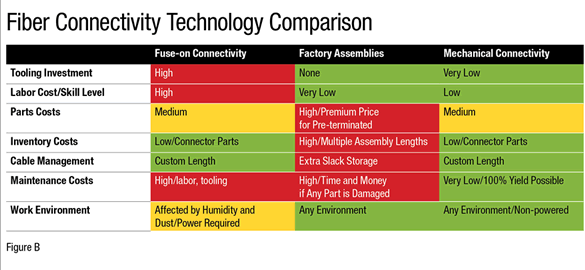
An analysis of total installed costs between the three methods of fiber connectivity solutions for in-building networks shows that the mechanical connector solution offers a better up-front and installed cost than the fuse-on connector solution, and offers a similar up-front and a lower installed cost as the pre-terminated solution.
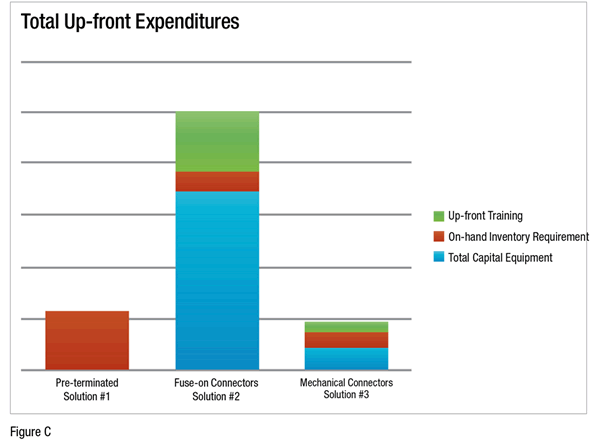
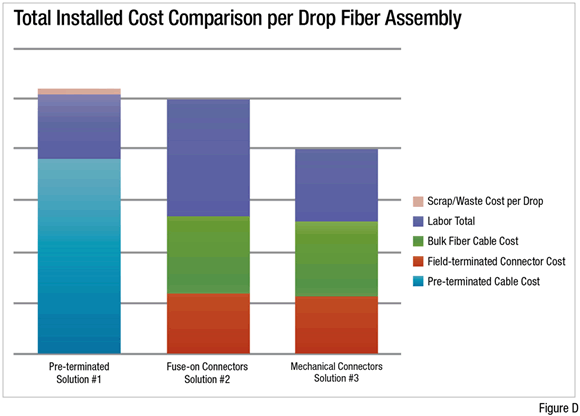
In comparing the installed cost of a single horizontal fiber to the work area, the “Mechanical Connectors Solution #3” is determined to be the lowest total installed cost solution. Another interesting comparison is between a singlemode fiber-to-the-desktop POL installation (utilizing mechanical fiber termination methods) and a traditional copper-based LAN structured cabling solution. A passive infrastructure cost analysis for a 1,000-gigabit Ethernet port configuration shows that a POL solution can cost up to 50% less in materials for the passive infrastructure (actual costs will depend on several factors, including material and configuration choices) compared to a traditional copper structured cabling installation. Labor expenditures related to the all-fiber premises cabling installation will be reduced significantly as well. This is due to the following:
- Singlemode fiber-to-the-desktop POL allows aggregated services over a single-fiber solution. Gone is the need for separate cables for voice, video, and data services, for example. Therefore, while typically two or more horizontal copper cables are needed to support multiple Ethernet connected devices in the work area, only a single fiber optic cable is needed for POL.
- Although fiber connectors are more costly than copper jacks, singlemode fiber cabling media itself is generally 20% to 50% less expensive than Category 6 or 6A copper structured cabling.
- The labor time required for the singlemode fiber-to-the-desktop installation and test certification of the installed fiber plant can be reduced significantly compared to the traditional copper structured cabling installation.
In addition to the near-term cost benefits mentioned above, the long-term benefits of investing in a fiber infrastructure should outweigh the traditional copper structured cabling solution. The installed singlemode fiber plant will generally outlast the copper infrastructure investment and can be used for generations of active electronics upgrades.
To read this white paper, entitled Connectivity Solutions for Passive Optical LAN Installations, in its entirety, click here.
[hr]
This article was contributed by 3M Communication Markets Division.

